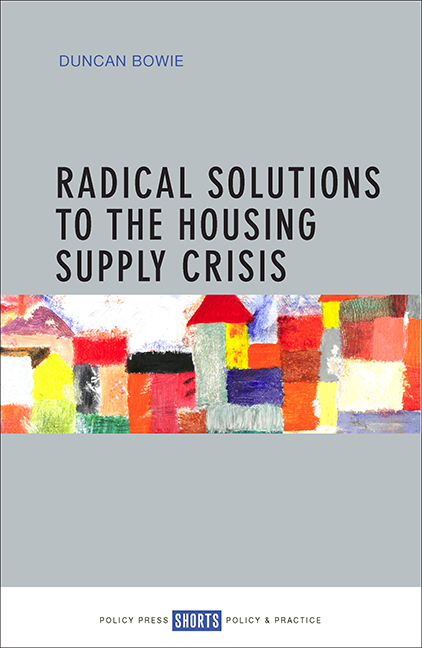6 - The wrong kind of homes
Published online by Cambridge University Press: 05 April 2022
Summary
Built form and density
In the last two decades, we have witnessed a significant change in the nature of new development, as well as a dramatic increase in the density of new developments. This follows from a range of factors: the wish to protect the countryside and open space in urban areas and, critically in the case of the London metropolitan region, the priority given to the protection of the green belt. Government data show an increase in average development density from 25 dwellings per hectare (dph) in 1996–99 to 42 dph in 2008–11. However, it is also driven by house-builders seeking to maximise profit by getting as many new homes onto a plot of land as they are allowed (see DCLG 2016a, Live tables land use change statistics [unfortunately, this data set is no longer maintained]). Some of the most significant increases are shown in Table 6.1.
In London, densification has proceeded at a much more rapid rate. For 2014/15, average density for completed schemes was 123 dph, but the schemes given planning approval that year increased to 159 dph. In a number of boroughs, average development density was substantially higher than that, for example, Tower Hamlets at 461 dph, Islington at 405 dph, Hackney at 389 dph and Lambeth at 355 dph. These borough averages can include individual developments at densities of over 2,000 dph, equivalent to densities in central Hong Kong. London does have explicit guidance on density policy within the London Plan, based on the principles of sustainable residential quality (SRQ), but in nearly every year since the London Plan was adopted in 2004, more than 50% of developments granted planning consent have been above the recommended density (see London Plan Annual Monitoring Report 12, 2014/15; Mayor of London 2016, p 21).
Given concerns as to the erosion of the green belt, it is perhaps significant to note that in the period 2013–16, only 3% of new residential development was within the green belt (DCLG live table 311 DCLG, 2016a). Between 2013 and 2015, 42% of residential development was on land that was not previously developed (often misleadingly referred to as ‘greenfield land’, while 58% was on previously developed land.
- Type
- Chapter
- Information
- Radical Solutions to the Housing Supply Crisis , pp. 93 - 98Publisher: Bristol University PressPrint publication year: 2017



